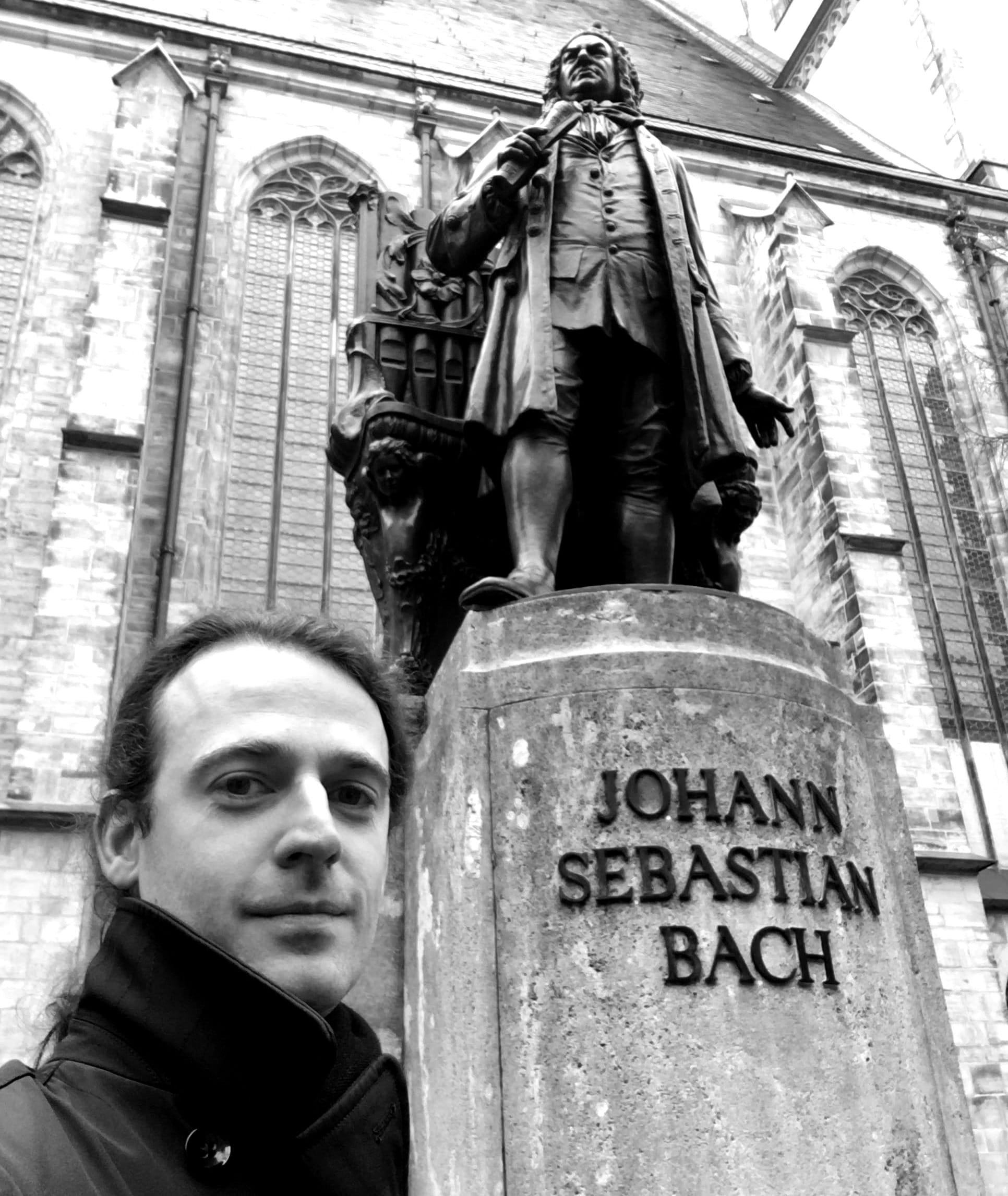300 Years of Bach's Passion

I am beginning to explore an idea that has been on my mind for some time now, which is to highlight some of the great masterworks I love from across the classical music universe. There is never going to be a definitive list, of course, but I will try to highlight some of the best works and the stories that surround them. Certainly, the music I point to is essential listening for anyone who wants to better know the pillars of this musical tradition.
Where better place to start than with a work by Johann Sebastian Bach (1685-1750), considered by many to be “the father of music”, or as Beethoven himself said, “the original father of harmony”? This is of course not a definitive statement, as there were many significant composers throughout history who had major influences on the development of music, but Bach’s place in the musical pantheon is undoubtedly central if not right at the center, and he remains a huge influence on musicians today, across genres and cultures.
Bach’s many masterworks make it difficult to pick a single one to highlight, and it would indeed be impossible to restrict my Bach selection to one composition only in my list of essential masterpieces! But on this day, I will focus only on one of his works, my choice made easy by a special anniversary.
Exactly three hundred years ago today, on April 7, 1724, that year’s Good Friday prior to Easter Sunday, Johann Sebastian Bach led the world premiere of his now-timeless Saint John’s Passion. If you are a Protestant church-goer or a serious Bach fan, you would certainly already be familiar with this tremendous work or some parts of it. The general public may otherwise be a bit more familiar with his Saint Matthew’s Passion, which in some ways is more famous. But the Saint John Passion holds its own special meaning and power.
The Passion is a dramatic, narrative oratorio recounting the last day and crucifixion of Jesus Christ. While not theatrically staged, it is essentially a sacred opera, the closest type of composition Bach came to actual opera, a genre he never touched upon, despite his interest (Bach attended a number of operas in Dresden, but unfortunately opera was not performed in Leipzig where he worked and lived for most of his professional life).
While we know from his obituary that he had composed five Passion oratorios, only two have survived to our day: the Saint John and the Saint Matthew Passions. Indeed, hundreds of works by Bach have vanished, and we can only hope that some of them will be discovered in some dusty library or attic in the future. In the meantime, we have plenty to enjoy from this eternal genius.
The Saint John Passion was composed and performed in the first few months of his new appointment as Cantor, or Director of Church Music, in Leipzig, which was the most significant post he held in his life as a musician, remaining in this position until his death in 1750, after 27 years. Amazingly, he was the city council’s 3rd choice only! The post was first offered to Georg Philip Telemann, then to Christoph Graupner, both of whom turned down the offer, luckily for Bach who really wanted this post.
This points to a surprising fact about Bach in those days: he was not nearly as famous as some of his other contemporaries, and yet, three centuries later, he supersedes them all by far.
Prior to his appointment in Leipzig, which was a major commercial and university city in Saxony, Bach had held various appointments in smaller towns in Thuringia, his native, and neighboring, province. Over the course of the previous five years, he had been Kapellmeister (director of music) to the court of Prince Leopold of Anhalt-Köthen, which did not require him to compose much religious music at all, allowing him to focus on secular music.
This was where some of his greatest non-religious works were composed, including the cello suites, the violin partitas and sonatas, the orchestral suites and Brandenburg concertos, and much of the First Book of his Well-Tempered Clavier (all of these are also essential masterpieces!).
However, upon taking his new post in Leipzig, he was required to compose a new Cantata for every Sunday service, along with special works for the holidays. And while Bach did often recycle pieces, or readapt them for various occasions, he composed hundreds as part of his duties in Leipzig.
Apart from a few cantatas, the Saint John Passion was his first major statement as Director of Music in Leipzig, and as such, holds significant meaning in Bach’s life and output.
It was critical to him that he establish his reputation to the city council and to the congregation. He did feel slighted to have been their third choice, and he needed to prove his worth beyond measure with this essential Christian drama. At barely 39 years old, he was still very driven and ambitious, and he gave this task his all.
And succeed he did!
The dramatic tension of this work is such that one can only be drawn in from start to finish, especially if the listener is moved by the story of Christ’s suffering and death. But even in purely musical terms, even if one does not follow the text, the music is itself so profoundly beautiful and heart-wrenching that it is, in my opinion, impossible not to feel drawn in. We can only imagine what his audience would have felt that day, 300 years ago. But as this was performed as part of the Good Friday vespers, there could be no clapping at the end, and people had to leave silently. It must have felt truly awe inspiring.
This oratorio, which lasts close to two hours, was composed for a four-part choir, with soloists including an evangelist who serves as the narrator, Jesus, Poncius Pilate, and other lesser characters. The instrumental ensemble consists of the usual strings, continuo harpsichord, winds, and lute, viola d’amore and viola da gamba for added color.
From the very first notes, one is taken by the intensity of Bach’s proposition. And after a few minutes of orchestral introduction, serving the same role as an operatic overture, the choir comes in and we feel the intensity of the story that begins to unfold. The rest of the work is divided between various orchestral and choral moments along with arias and recitatives, much like in actual opera from Bach’s time period.
These operatic elements were a bold statement for him in his time, in a place where opera was forbidden, and where it was considered important that the music not take away from the religious purpose it was intended for.
Bach never slowed down in the following decades, except once he was forced to by two botched cataract surgeries in his last year by the sadly successful charlatan John Taylor, who blinded him and caused a fatal infection (he committed the same crime upon Georg Friderich Händel eight years later). The list of masterworks he composed in the ensuing years is a long one, and includes the Saint Matthew Passion of 1727. But that story is for another time!
Time is now to music. While there are many great recordings, I will leave you with one that was made live at the Thomaskirche in Leipzig, the church where Bach worked mostly and where he is buried today. This recording and film was made in 2022, by the Bach Foundation Choir and Orchestra, conducted by Rudolf Lutz.
The best way to get into this work is just to press play! Let yourself be taken in, and whether you stay focused on it or you go about your day, it will, I hope, become one of your favorite masterworks, as it has been for me.
If you want to share your favorite recordings, please leave the links in your comments.
